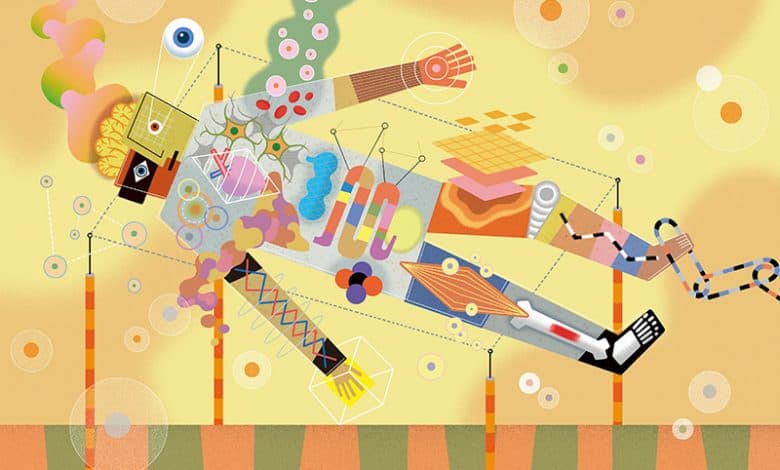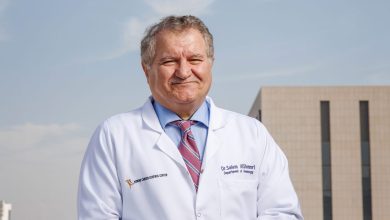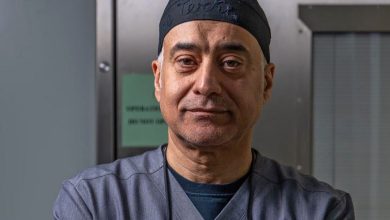
Dr. Mohammed Al-Daghim
Specialist in Neurosurgery and Spine (Kuwait)
Pain is a widespread global problem and a significant burden on patients and healthcare systems. Studies estimate that about one-fifth (20%) of adults suffer from pain and about 10% of adults develop chronic pain each year. Patients may experience acute, chronic or intermittent pain, or a combination of these types.
There is acute pain, which is a recent pain caused by a specific injury or inflammation in the body; chronic pain, which consists in the persistence of acute pain for several months without being treated well; and intermittent pain, which comes in the form of attacks separated by periods in which the patient does not experience any pain.
But it must be recognized that pain is difficult to measure or characterize, and it varies from patient to patient. Doctors use numerical scales, such as giving the pain a score out of ten, or indicating a specific graphic that expresses their condition, and the doctor may use behavioral and functional evaluation to help assess pain. The most common causes of pain globally include injury or injury, such as cuts, bruises, burns or fractures; surgery; and diseases.
Diseases that cause pain include tumors, joint and bone diseases, and spinal problems. Chronic pain can lead to serious problems, including depression and inability to work, sometimes affect social relationships and, in some serious cases, suicidal thoughts. All societies in developed and developing countries suffer because of the problem of pain, and it has an economic impact. In the United States alone, pain treatment is estimated to cost $140 billion a year. All of the above underscores the importance of pain management and management.
TYPES OF PAIN ACCORDING TO THE MECHANISM OF OCCURRENCE
There are two types of pain in terms of causes of occurrence, the first: nociceptive pain, which is caused by external factors and the nerves that transmit pain and the brain parts receiving it are intact, and lead to the stimulation and stimulation of peripheral receptors located in the skin and other tissues, which is the usual mechanism for the occurrence of pain. For example, in the event of tissue damage such as a burn or a specific trauma, chemical receptors such as prostaglandins, bradykinins and serotonin are released, so the receptors that transmit the nerve impulse to receptors in the spinal cord are alerted, where substance "B" and other nerve receptors are released to complete the signal to the brainstem, and from it to the thalamus (thalamus), and finally to the cerebral cortex and the lymphatic system, where sensation is interpreted and its physical and psychological impact occurs. And all in a jiffy. In some cases, pain can be helpful, as it detects the disease, makes you pull your hand when you prick it, or move away from a heat source that could cause you serious burns.
The entire stimulation process ends in the midbrain where endorphins and anclavin, which are central analgesics secreted by the body and inhibit the transmission of pain impulses, are released. This understanding has led to the creation of many treatments that intervene and relieve pain on several levels.
The second type or mechanism of pain: neuropathic pain, which is pain resulting from external or internal damage to any part of the peripheral nerves and central nervous system (spinal cord and brain), that is, there are pathological changes in the nerves themselves or in some parts of the brain or medulla. this type falls under a wide spectrum, such as root pain caused by compression of the spinal nerves, diabetic or metabolic neuritis, trigeminal neuralgia, complex neurological pain, and pain after infection with viruses.
Mechanisms of neuropathicpain
Neuropathic pain affects about 3% of the population, is characterized by being often chronic, more difficult to treat, and potentially catastrophic for the patient's life. Some of these pains are accompanied by muscle weakness or numbness and paresthesia as a result of neurological injury. The mechanism of pain here is complex:
in peripheral nerves, the myelin surrounding the nerve and abnormal swelling of the nerve fibers (neuroma) occur, increasing the possibility of nerve irritation and pain. Sodium and calcium channels of the nerve membrane play an important role in the mechanism of irritation and the occurrence of pain. Hence the idea of using drugs that inhibit α-2-delta subunit of voltage-gated calcium channels, thus inhibiting the occurrence of pain in the dorsal (posterior) nuclei of the spinal cord nerves.
In the central parts of the nervous system: increased neuron sensitivity and decreased stimulation threshold contribute to it, and here the role of NMDA receptors emerges. Several antireceptor antagonists were studied in order to relieve pain. The activation of the periaqueductal grayrostral ventromedial medulla has been shown to inhibit the occurrence of pain, and by this mechanism antidepressants and morphines act.
Sympathetic activation supports the persistence of pain.
Neuropathy syndromes
One of the most important neuropathic syndromes is diabetic neuritis, in which there is often a symmetrical lack of sensation with a burning sensation in both extremities; in the nerve ganglia and increased sensitivity of skin receptors.
There is a complex regional pain syndrome, which is in a specific limb, for example, such as the hand, in which excruciating pain occurs with a disturbance in the blood flow to the area, sweating, edema and swelling, and occurs after injury to the sensory nerve fibers and their interference with sympathetic fibers. In some cases, we resort to cutting sympathetic fibers in order to relieve pain.
Managementand treatment of nerve pain The management and treatment of pain
depends on the cause and presumed mechanism of pain, and this varies according to the patient's age and health condition.
Conservative treatments:
Non-pharmacological treatments: exercise, physical therapy, transdermal electrical stimulation, and cognitive-behavioral therapies. Education includes any education and education of the patient about pain, especially chronic pain, to prepare him for living with some level of pain, and this is all part of supportive psychotherapy. Doctors may use acupuncture. The mechanism assumed here is to increase the ankyvalins secreted by the body to suppress pain.
Pharmacological treatments in case of chronic pain: One of the most important of these treatments is tricyclic antidepressants, which are used to treat nerve pain, and work by increasing serotonin and noadrenaline that stimulate the downward bundles that inhibit pain alerts. Studies on antidepressants have shown that NNT (the average number of patients needed to be treated for one to benefit) is 3 for siotonin and norepinephrine inhibitors (e.g. amitriptyline) and noreptineptinous inhibitors (e.g. nortriptyline). Selective serotonin antidotes (SCOPs) have an average NNT of 6.7, and mixed selective antihistamines such as duloxetine and venlafaxine range from 4.1 to 5.5.
Anticonvulsants, such as carbamazepine and phentoin, are also treatments. It is somewhat effective, with an average NNT between 2.1 and 2.3, but due to the side effects it may cause, it can only be the first line of treatment in the case of trigeminal pain, as carbamazepine is still the first line of treatment due to its great effectiveness. Gabapentine and pyogaline treatments that act on calcium channels can be used because of their fewer side effects.
Among the drug treatments in the case of chronic pain are opioids or opioids, there are studies on their effectiveness, but you should beware of the issue of addiction, and exclude patients with a history of drug use. They are particularly used with stubborn situations. There are also morphine, tramadol and metadone, but their effect on quality of life and mood varies from patient to patient.
Topical medications, such as 5% lidocaine, are patch-shaped, and are used especially for the pain of regional disease.
In general, non-pharmacological treatments should always be started, and nerve blockage or injection can be helped in cases where the pain is related to a specific nerve, then in the later stage topical lidocaine can be tried, and then we switch to first-grade drugs, namely gabapentin, biogabilin or antidepressants.
If there is no effectiveness, the drug can be changed, but if there is no partial response, the two drugs can be added together. If treatment fails, a second-line medication such as morphines or tramadol can be added, and the patient should be admitted to a pain rehabilitation program.
Principles of acute
pain treatment The first principle: giving painkillers before pain occurs, and it is usually more effective as in pain after surgery.
The second principle: giving a sufficient amount of painkillers that relax the patient so that he can practice his daily activities, for example, after surgery, the patient must be comfortable to be able to breathe and move and be able to enter into physical therapy.
The goal of treatment varies from patient to patient, in chronic pain sometimes the goal is to help the patient go to work and avoid depression. In patients with critical cases, the goal is to help the patient live the last moments happily and comfortably with his loved one. In most cases, we need to interfere with more than one drug, and here two drugs (and possibly more) must be shared together that work with different mechanisms to relieve side effects and get the best effect, and sometimes using non-drug means.
Studies have shown a different response among patients to painkillers, and some of these differences are said to be genetic. When side effects occur or there is no improvement, giving another drug of the same class may work.
Analgesics are divided here into non-opioid analgesics, opioid analgesics and analgesic generative drugs.
Medications must be used appropriately, in case of accidental pain, medications can be used when needed, but in the case of persistent or intractable pain, a protocol must be used that covers all the patient's time around the clock. The patient's response to treatment should be monitored and adjusted as needed.
When non-opioid analgesics are given, the most important of which is acetaminophen and its maximum dose of 4,000 mg per day, caution should be exercised in patients who have liver function problems, but it is safe for the stomach. The second drug, aspirin, works like NSAIDs by inhibiting the synthesis of prostaglandins, but caution should be exercised because of its effect on platelet aggregation, throttling, and side effects on the gastric membrane.
NSAIDs work especially on trauma, surgery and inflammatory pain. There is the old generation that acts on cyclocooxygenase, and the new type that acts on the second type of the same enzyme. Modern drugs have less effect on the stomach and platelet function, but both types affect kidney function, especially in cases of chronic use.
Also analgesics include opioid analgesics, the most important of which are morphine and oxycodeine, and the least symptomatic is codeine.
Surgical treatments
In many cases, the treatment of pain is surgical, for example, when conservative treatment fails in cases of a herniated disc between the vertebrae or in the case of neurological damage, we intervene surgically to remove the herniated disc and release the nerve. We may fix the vertebrae if there is instability.
There are many interventional or surgical treatments in cases of pain, including frequency wave needles that can be applied to the vertebral lateral joints, where a certain temperature is applied to the nerve branch innervated to the joint, back or neck, and this leads to the disruption of the fibers responsible for pain and the patient loses the sense of pain in the target area.
We may apply the same treatment to the main nerve itself when surgical and conservative treatment fails, and there is a device that can be used, which depends on implanting special electrodes over the spinal cord or above the target nerve, and connecting them to a device implanted under the skin that generates electrical alerts that contribute to inhibiting pain impulses, and this inhibits the patient's feeling of pain.
There are also brain surgeries aimed at treating pain, including deep brain stimulation by implanting an electrode attached to an electrical stimulator placed under the skin. A subcutaneous pump that injects morphine directly into the meningeal sac encapsulating the spinal cord can be implanted and is used in cases of pain, especially in patients with tumors in the final stages, where it is considered palliative interference.
There is a specific surgery that we perform in the case of trigeminal nerve pain, which is to remove the pulsating artery from the nerve and separate them with a piece of Teflon, and this is a panacea in most patients whose condition allows surgery.
General
tips Pain management improves the psychological state of the patient and the work of the various organs of the body, and protects him from complications.
Pain management improves the patient's social and professional performance.
First, second and third focus should be on physical therapy, not only because it strengthens muscles, calcifies bones, improves the work of breathing and the heart, but also because it improves the patient's psyche and enhances his confidence in himself and his recovery.
In some cases, the patient needs psychological counseling or psychosocial support. It should be noted that the response to treatment in an unemployed and socially isolated patient is much more difficult than that of a patient who works or performs household and social duties on a regular basis.
Analgesics should be used gradually but in the correct doses, preferably in severe pain to start immediately by combining several non-opioid drugs together with adjuvant medications (anticonvulsants and antidepressants) before resorting to opioids.




